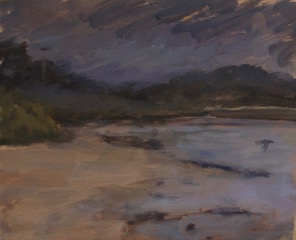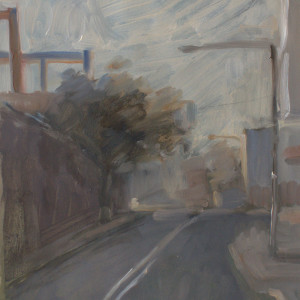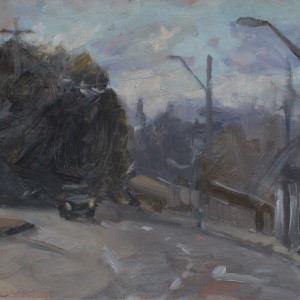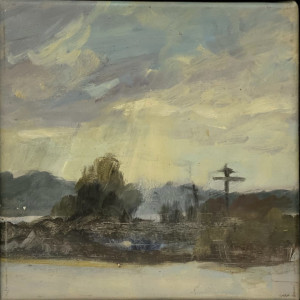Matilda Michell
Matilda’s paintings depict dreamlike landscapes with a focus on muted colour, light and atmosphere. They are both captivating, moody, and beautiful. Matilda Michell, paints in the classical tradition, but in a contemporary and modern context. She admires the famous French still life painter, Chardin, and uses many of his techniques in her own work. He captured the beauty in what were at the time ordinary everyday objects. Those objects today would look anything but ordinary, and so Matilda, instead, portrays todays coexisting packets of flour, milk bottles, keys, coins, tin cans – things with contrasting shapes and interesting surface textures that we all use every day, often overlooking their inherent beauty. Matilda Michell graduated from the National Art School in 2009. She specialises in classical oil painting techniques and has won a number of prizes and residencies including the Waterhouse Art Prize, the Glebe Art Prize, the Waverley Art Prize and the Pata Paris Studio Residency. She has been a finalist in many other prestigious art awards including the Doug Moran Portrait Prize, the Portia Geach Portrait award, the Black Swan Prize for Portraiture and the Kilgour Prize. During her time at the National Art School, she was the recipient of a Willm Fletcher Foundation Grant and the Pata Paris Studio Residency Award. She won the Art History and Theory Prize in both first and third year, and was highly commended in the John Olsen prize for Figure Drawing and the Arthur le Gay Brereton Draughtsmanship award. Matilda also has a Bachelor of Arts, majoring in Media Arts and Production, and a Bachelor of International Studies from UTS. “In his ‘Salon of 1846’ Baudelaire discusses the need for both a transitory and an eternal element to art, a concept I have found very helpful in making sense of how and why one should be contemporary. An artwork that contains only the transitory elements of its own time will be fleeting and shallow; a painting that contains only the eternal elements is too static, too removed from the world and from our experience of it. Like poetry, a good painting comes back to you at odd moments and so it is crucial that it exist in the memory as well as in a physical form. A painting created now, if well done, can be a kind of interpreter or mediator between the present and the rich history of past art. It can invoke the paintings of the past but also tie them to our everyday lives so that we might see in our lives, and in the ordinary things around us, something of the eternal beauty of those past masterpieces.”






